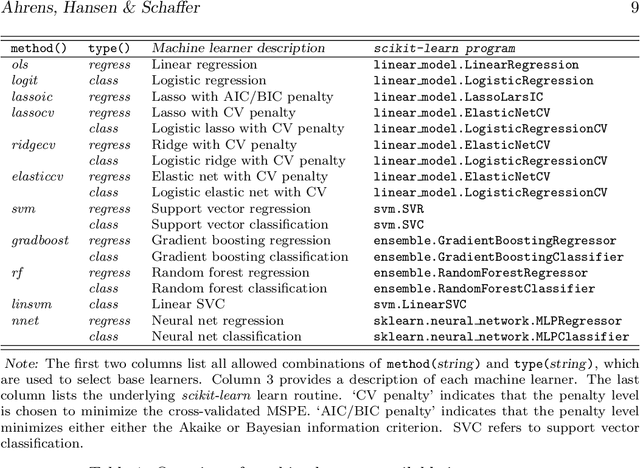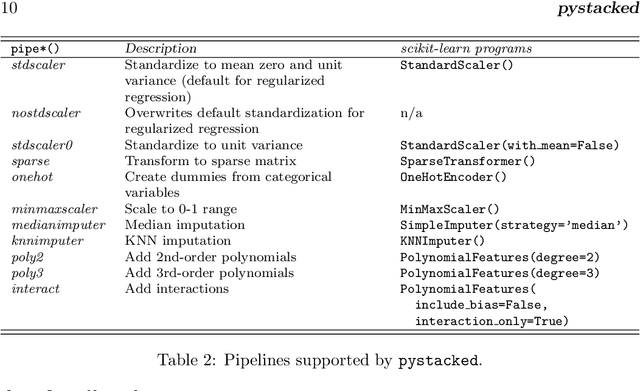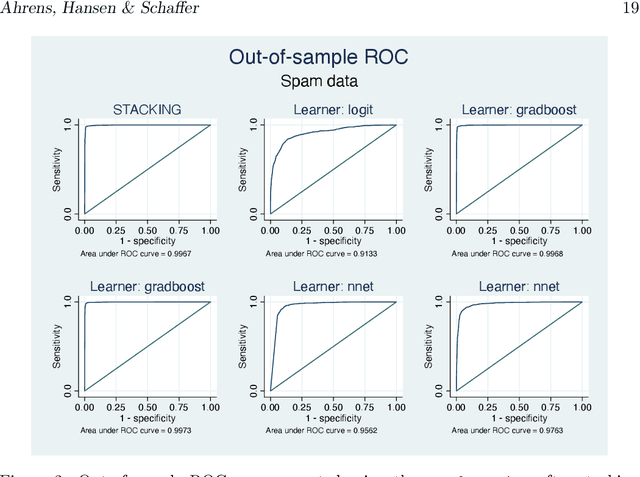Achim Ahrens
An Introduction to Double/Debiased Machine Learning
Apr 11, 2025Abstract:This paper provides a practical introduction to Double/Debiased Machine Learning (DML). DML provides a general approach to performing inference about a target parameter in the presence of nuisance parameters. The aim of DML is to reduce the impact of nuisance parameter estimation on estimators of the parameter of interest. We describe DML and its two essential components: Neyman orthogonality and cross-fitting. We highlight that DML reduces functional form dependence and accommodates the use of complex data types, such as text data. We illustrate its application through three empirical examples that demonstrate DML's applicability in cross-sectional and panel settings.
Model Averaging and Double Machine Learning
Jan 03, 2024Abstract:This paper discusses pairing double/debiased machine learning (DDML) with stacking, a model averaging method for combining multiple candidate learners, to estimate structural parameters. We introduce two new stacking approaches for DDML: short-stacking exploits the cross-fitting step of DDML to substantially reduce the computational burden and pooled stacking enforces common stacking weights over cross-fitting folds. Using calibrated simulation studies and two applications estimating gender gaps in citations and wages, we show that DDML with stacking is more robust to partially unknown functional forms than common alternative approaches based on single pre-selected learners. We provide Stata and R software implementing our proposals.
ddml: Double/debiased machine learning in Stata
Jan 23, 2023Abstract:We introduce the package ddml for Double/Debiased Machine Learning (DDML) in Stata. Estimators of causal parameters for five different econometric models are supported, allowing for flexible estimation of causal effects of endogenous variables in settings with unknown functional forms and/or many exogenous variables. ddml is compatible with many existing supervised machine learning programs in Stata. We recommend using DDML in combination with stacking estimation which combines multiple machine learners into a final predictor. We provide Monte Carlo evidence to support our recommendation.
pystacked: Stacking generalization and machine learning in Stata
Aug 23, 2022



Abstract:pystacked implements stacked generalization (Wolpert, 1992) for regression and binary classification via Python's scikit-lear}. Stacking combines multiple supervised machine learners -- the "base" or "level-0" learners -- into a single learner. The currently supported base learners include regularized regression, random forest, gradient boosted trees, support vector machines, and feed-forward neural nets (multi-layer perceptron). pystacked can also be used with as a `regular' machine learning program to fit a single base learner and, thus, provides an easy-to-use API for scikit-learn's machine learning algorithms.
 Add to Chrome
Add to Chrome Add to Firefox
Add to Firefox Add to Edge
Add to Edge